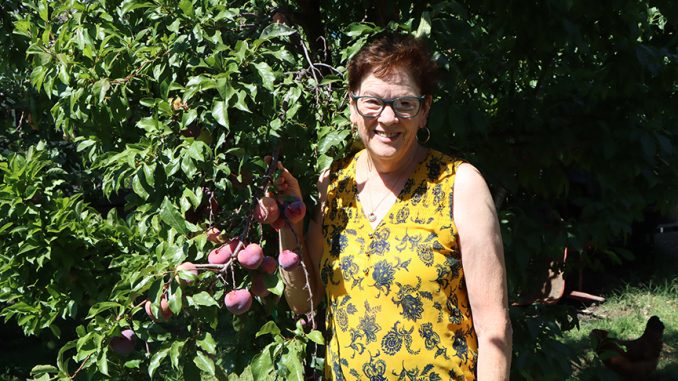
According to the California Department of Food and Agriculture, Californians throw away approximately 6 million tons of food annually. This staggering number equates to 18% of all material that goes into California’s landfills. With these types of numbers, the waste issue seems daunting, and residents may doubt their efforts could possibly make much difference, so why try?
For answers, we turned to Susan McCurry Murphy, who has been the coordinator for the Tehama County Food Alliance for 10 years. A former high school teacher, she holds a B.S. in Dietetics Food Science and Nutrition, as well as a California State Teaching Credential in Chemistry and Life Science, and a Master’s Degree in Public Administration. With her impressive resume and experience, Murphy has a plethora of advice on how reducing food waste in our households can be easy and fun—and has a huge impact.
Simply stated, Californians can help stop the great waste, Murphy says, by adopting six practical habits: planning, shopping, cooking, storing, reusing and composting. Not only will these efforts help protect the life of our landfills and the environment, but it also saves us money. (Experts estimate the average family wastes $1,500 a year on food that goes uneaten.)

Planning—Make lists of the weekly meals made at home, make a grocery list of items needed, and keep an ongoing list of grocery items that need to be replenished.
Shopping—Select foods that do not go bad quickly; for example, buy whole fruits and vegetables and cut them up right before you eat them. Purchase blocks of cheese to dice or shred just before using. Murphy advises against buying bulk or warehouse economy-size food that will spoil.
Cooking—Plan for leftovers when prepping and cooking a meal. Label and freeze the unused portions so there will be homemade options when days are too busy to cook. This will also help fight the temptation to go out for fast-food. For example, leftover rice can be frozen to use for another meal or used the next day for breakfast with warm milk, cinnamon, vanilla, fruit or honey.
Storing—Use freezer bags and label what is inside for future use. Store cottage cheese upside down in the refrigerator—this seals the air out and lasts longer. Put new items in the refrigerator behind the current ones, therefore not wasting the older milk, yogurt, salsa, etc., but using them first.
Reusing—There are endless ways to reuse food scraps from the kitchen instead of throwing it all away. A few ideas: Use stale bread to make croutons or breadcrumbs, or soften slices of bread in beaten egg/milk to make French toast. Save the jar of pickle juice and throw in bits of extra raw vegetables like zucchini, carrots or cauliflower for snacks. Put wilted lettuce in ice water to rejuvenate it or use it in a stir fry or soup. Leftover meat or vegetables can be put together in a freezer bag labeled “LOST” (left over soup tidbits). Over-ripened fruit is perfect for smoothies.
Composting—This may seem particularly overwhelming or time consuming, but even doing a little on a small scale helps. The Environmental Protection Agency is a great resource for learning to compost. A few examples of items that make really good soil for indoor or outdoor plants are used coffee grounds, egg shells, onion skins and banana peels. Additionally, the Tehama County Solid Waste Management Agency offers semi-annual compost classes. Give them a call at (530) 528-1103.
Murphy often tells her students, staff and others in her community that if it all seems too complicated or too much work, “Don’t worry, because all you have to do is choose one thing. Pick just one item from one of the lists in one of the sections and start there.”
She adds, “Get the whole family involved in meal planning, shopping, cooking, storing, composting, gardening, and cleaning.”
And know that every bit, no matter how small, helps.

For more information on SB 1383 and how it will affect Tehama County residents, visit www.tehamacountylandfill.com. This article was funded by a grant from CalRecycle.

